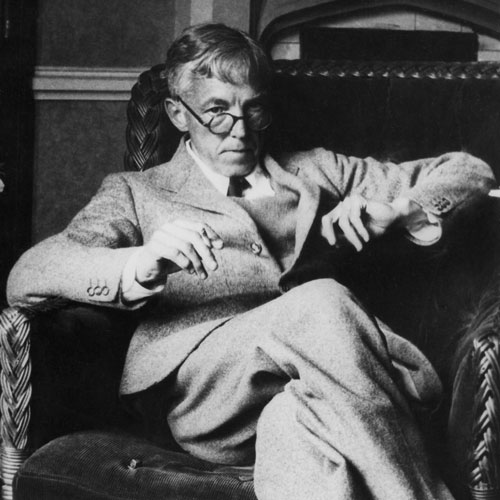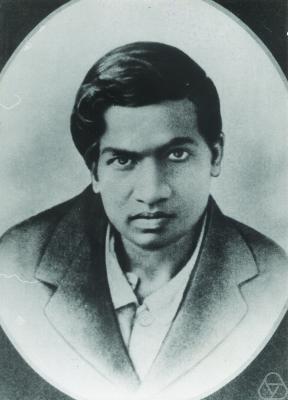G.H. Hardy
by Andrew Boyd
Today, a friendship and an apology. The University of Houston's College of Engineering presents this series about the machines that make our civilization run, and the people whose ingenuity created them.
"A mathematician," said G. H. Hardy, "is a maker of patterns, like a painter or poet."
Hardy the mathematician wasn't always so philosophical about his trade. Growing up in late nineteenth century England, he found he liked math simply because he was better at it than his peers. When he won a scholarship to study math at Cambridge his interest quickly waned. But just as he was turning twenty, he found a professor who brought math alive for him. Hardy was finally, indelibly hooked.

Photograph of Godfrey Harold Hardy (1877-1947)[Wikipedia]
Hardy was the stereotypical English mathematician of the early twentieth century. He lived a gentlemanly life of teaching and research at both Cambridge and Oxford. He followed cricket with a passion second only to math. And his eccentricities were well chronicled: he hated having his picture taken and he shunned mirrors, covering them when he stayed in hotels.
Hardy was an accomplished scholar in his own right, but two events dominate his legacy. One was his mentorship of Srinivasa Ramanujan, a self-taught prodigy from India. Ramanujan's insights, both penetrating and prolific, stand apart among mathematicians. And it was Hardy who emancipated this creative mind.

Srinivasa Ramanujan [Wikipedia/http://owpdb.mfo.de/]
Further defining Hardy's legacy was an essay he completed in 1940 at the age of 63. Lacking the keen mathematical focus of his youth, Hardy weighed in on the aesthetics of math in A Mathematician's Apology. It's an apology in the classical sense — a defense of his life's work. Hardy embraced pure math, math that doesn't trace its roots to anything practical. And he was compelled to explain why.
Hardy's defense builds on a comparison with art. "The mathematician's patterns," says Hardy, "like the painter's or poet's, must be beautiful. Beauty is the first test: there is no permanent place in the world for ugly mathematics."
Hardy's position is extreme, but the pillars of his apologetics ring true. Math is beautiful. For those who struggle with it, "beauty" may be the last word that comes to mind. But those who find joy in math can't help but experience a sense of wonder.
For Hardy, however, pure math wasn't simply beautiful; it transcended other forms of beauty, up to, and including, math that wasn't so pure. The strategies of great chess masters were, in the words of Hardy, "trivial." The math used by engineers "dull." The "real" math of the "real mathematicians," said Hardy, "is almost wholly useless." Hardy offered far more than a defense of his life's work. He placed it on the highest pedestal, arguing superiority by its very uselessness.
The frank confessions in A Mathematician's Apology provide entrée into the mind of a man who loved math for the sake of math. Still, the essay might have benefitted from an appendix on humility.
I'm Andy Boyd at the University of Houston, where we're interested in the way inventive minds work.
(Theme music)
Notes and references:
By saying pure math was "useless," Hardy meant something that didn't serve the "material well being and comfort" of humankind.
For a related episode see RAMANUJAN.
Godfrey Harold Hardy. From the Saint Andrews website: http://www-history.mcs.st-and.ac.uk/Biographies/Hardy.html. Accessed February 25, 2014.
This episode first aired on February 27, 2014.